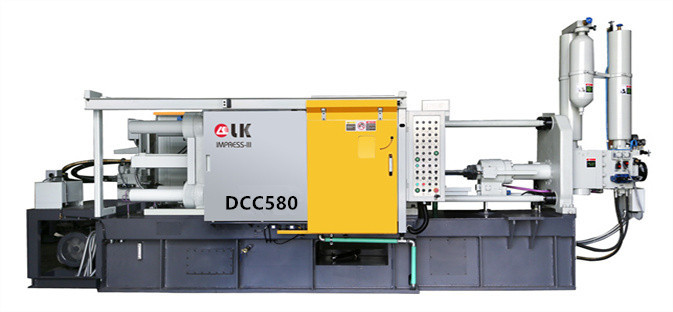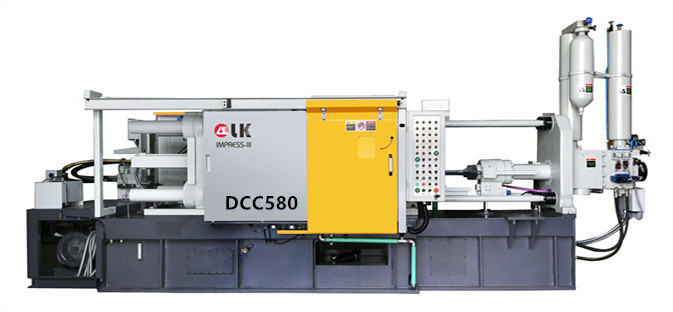What are Die Casting Molds Made of
LK Die Casting Machine / 2024-07-05 15:18:25
Introduction
Die-casting molds play a key role in the manufacturing industry and are mainly used to produce various metal parts.
Understanding the material selection of die-casting molds is crucial to ensure product quality and production efficiency.
This article will explore the material composition of die-casting molds in depth to help readers quickly master this important knowledge.

Basic requirements for die-casting molds
Die-casting molds need to meet the following basic requirements:
High strength and hardness: The mold must be able to withstand use under high pressure and high-temperature conditions.
Good wear resistance: The mold should have high wear resistance to extend its service life.
Good thermal stability: The mold needs to remain stable and not deformed at high temperatures.
High toughness: The mold should have sufficient toughness to prevent cracking or breakage during use.
Common die-casting mold materials
1. Tool steel
Tool steel is the most commonly used die-casting mold material with the following characteristics:
High strength and hardness: Tool steel has excellent strength and hardness and can withstand high-pressure conditions.
Wear resistance: Tool steel has high surface hardness and good wear resistance.
Thermal stability: Good dimensional stability at high temperatures.
Common tool steel grades include H13, SKD61, and D2. H13 steel is widely used in die-casting mold manufacturing due to its good comprehensive properties.
2. Hot work die steel
Hot work dies steel is designed for molds under high-temperature conditions and has the following characteristics:
High-temperature strength and hardness: Maintain strength and hardness in high-temperature environments.
Resistance to thermal fatigue: Ability to resist thermal fatigue during repeated heating and cooling.
Toughness: Good toughness reduces crack formation.
Common hot work die steel grades include H11, H13, and H21.
3. Aluminum alloy
Aluminum alloy is also used in some specific die-casting applications due to its lightweight and good thermal conductivity:
Lightweight: Aluminum alloy is light and easy to handle.
High thermal conductivity: Aluminum alloy has high thermal conductivity, and can quickly dissipate heat and reduce heat accumulation.
Common aluminum alloy grades include 6061 and 7075.
4. Copper alloys
Copper alloys are also used in some special die-casting applications due to their excellent thermal conductivity and corrosion resistance:
High thermal conductivity: Copper alloys have extremely high thermal conductivity, which helps to dissipate heat quickly.
Corrosion resistance: Copper alloys have good corrosion resistance and are suitable for corrosive environments.
Common copper alloy grades include C17200 and C17510.

Factors affecting material selection
When choosing die-casting mold materials, the following factors need to be considered:
Mold life: The wear resistance and fatigue resistance of different materials will affect the service life of the mold.
Production cost: Material cost and processing cost need to be balanced, and choosing the right material can reduce the total production cost.
Product quality: The performance of the material directly affects the quality of the final product.
Production efficiency: Materials with high thermal conductivity help to improve production efficiency and reduce production cycles.
Development trend of die-casting mold materials
With the advancement of science and technology, die-casting mold materials are also developing. Future development trends include:
New alloy materials: Research and develop new alloy materials that are more resistant to high temperatures and wear, and improve the performance and life of the
mold.
Surface treatment technology: Through advanced surface treatment technologies such as nitriding and chrome plating, the surface hardness and wear resistance of the
mold is improved.
Composite materials: Develop high-performance composite materials, combine the advantages of multiple materials, and further improve the performance of the mold.
Conclusion
The material selection of the die-casting mold is crucial to the success of the die-casting process.
Tool steel, hot work die steel, aluminum alloy, and copper alloy are common die-casting mold materials, each of which has unique properties and is suitable for
different application scenarios.
By rationally selecting and applying these materials, the service life and production efficiency of the mold can be effectively improved, ensuring the high quality
of the final product.
In the future, with the continuous development of new materials and technologies, the performance of die-casting molds will be further improved, bringing more
innovations and breakthroughs to the manufacturing industry.
Contact LK Egypt to learn more info about the die-casting machine
LKAGENT OFFICE DCM
Address: Industry Zone, South of Port Said Kebly, Egypt
https://www.zazdiecasting.com/
Phone: +86 13598704163
Mobile: +20 101 304 3317 +20 150 181 8310
Email: jack@zazmae.com ahmedmahmoud@zazmae.com
#die cast tooling
#trivalent chromate
#rapid prototype casting
#a360 aluminum
#aluminum caster
#aluminum prototype
#ideal 55 slider parts
#density of aluminum kg/mm3
#magnesium sheet metal
#parts of a metal gate
#subcontracting of screw machining for the luxury sector
#wall aluminum
#die casting tooling
#tooling for die casting
#density of aluminium in kg mm3
#clear chromate
#es casting metals
#gating material
#prototype aluminum
#sigma castings
#subcontracting of screw-machining for household appliances
#we squeeze to please machine
#aluminium gravity die casting
#aluminum part
#aluminum rapid prototyping
#nickel casting
#plunger tip for die casting machine
#rapid prototyping aluminium
OTHER CONTENT
-

2024-09-19 14:16:15 LK Cold Chamber Die Casting Machine DCC900 Locking Force: 9000KN Die Height: 400-1000mm Space Between Tie Bars: 930x930mm Shot Weight: 13.5Kg Casting Area Max:2250c㎡
More -

2024-09-19 14:11:06 LK Cold Chamber Die Casting Machine DCC280 Locking Force: 2800KN Die Height: 250-650mm Space Between Tie Bars: 560x560mm Shot Weight: 2.9Kg Casting Area Max:700c㎡
More -

2024-09-19 10:23:07 LK Cold Chamber Die Casting Machine DCC580 Locking Force: 5000KN Die Heigh: 350-850mm Space Between Tie Bars: 760x760mm Shot Weight: 6.9Kg Casting Area Max:1250c㎡
More -

2024-09-19 10:11:20 LK Cold Chamber Die Casting Machine DCC400 Locking Force: 4000KN Die Height: 300-700mm Space Between Tie Bars: 669x669mm Shot Weight: 4.7Kg Casting Area Max:1000c㎡
More

